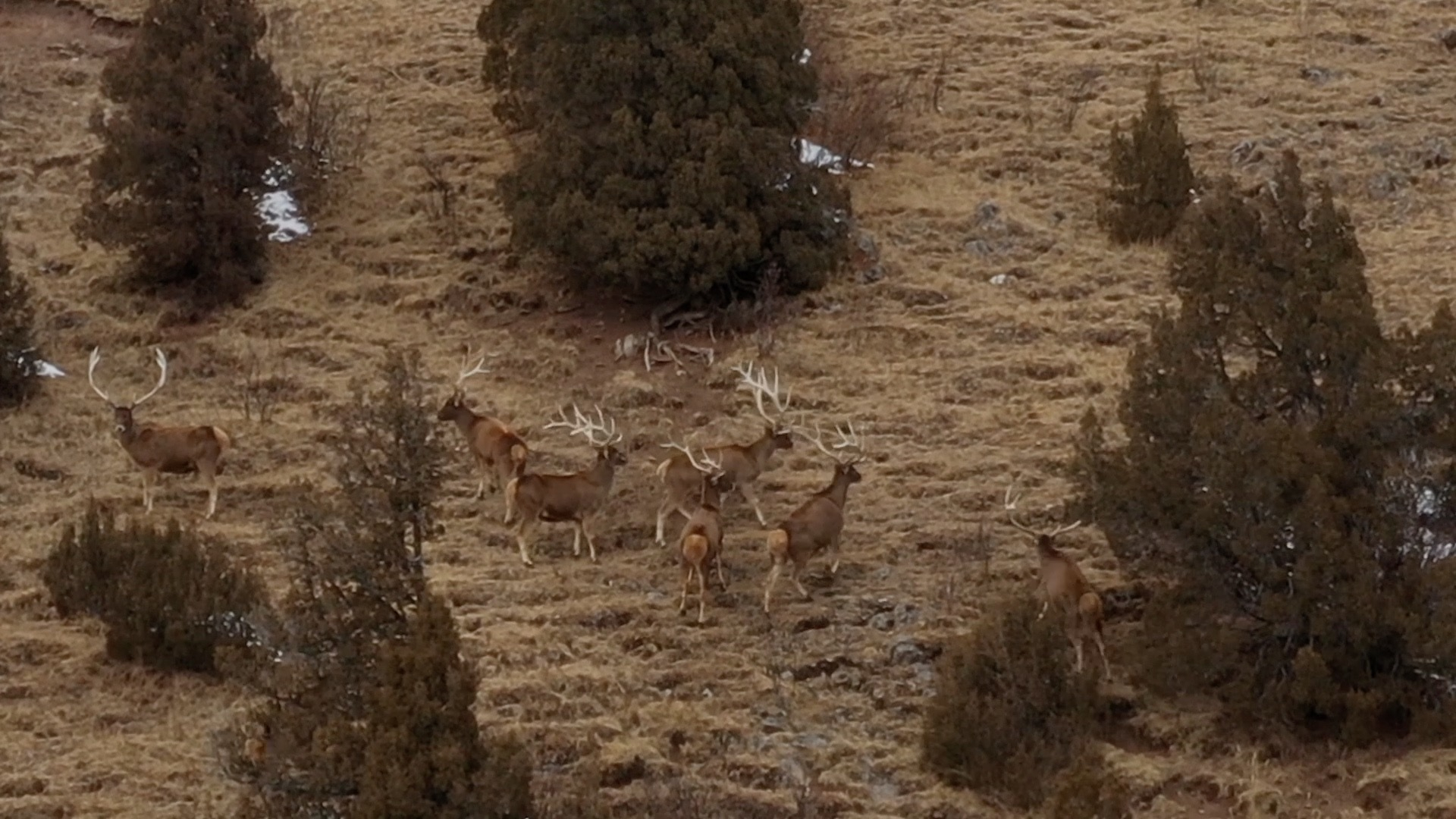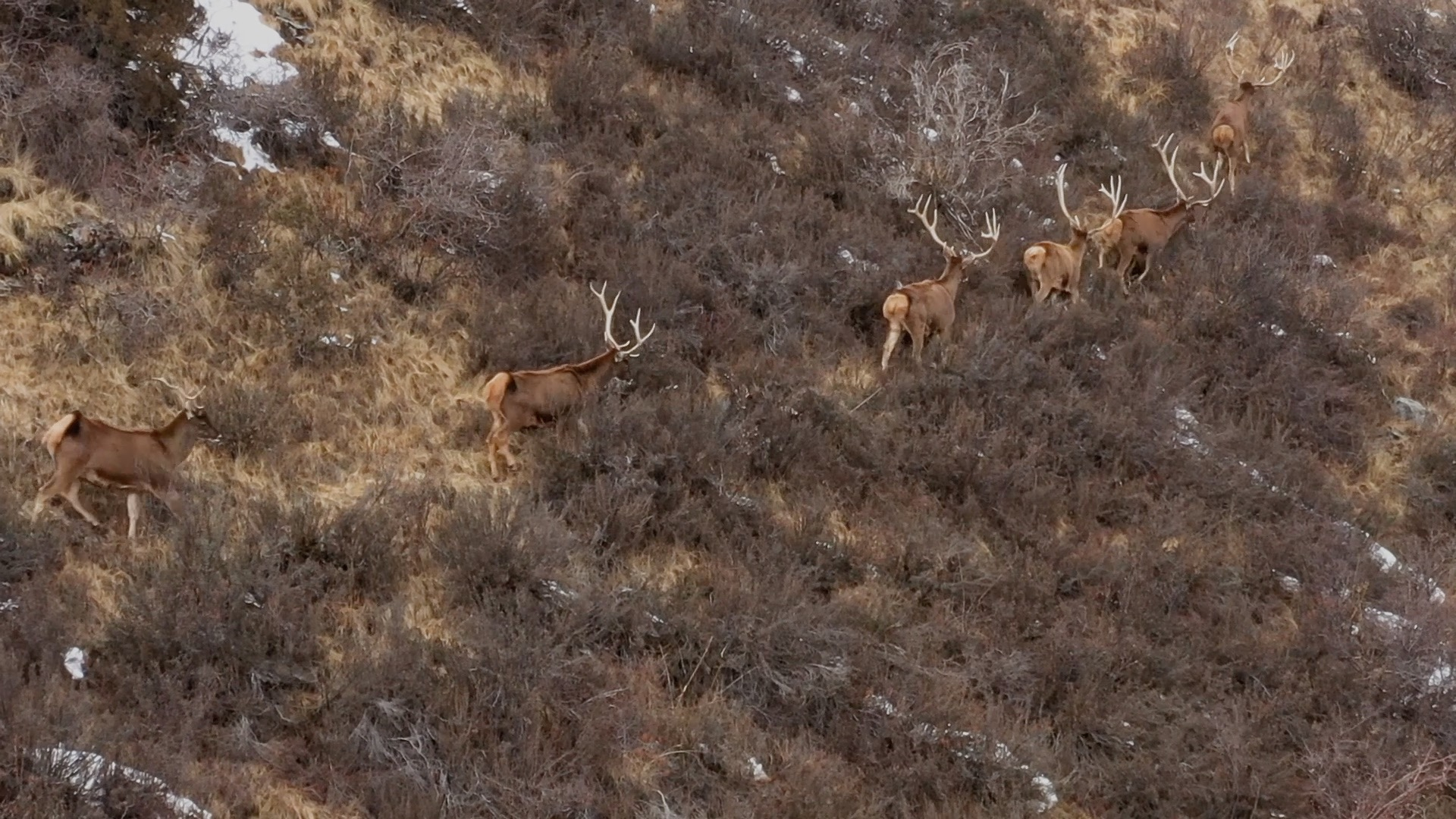Recently, around 200 White-lipped deer were spotted in the Luoxu White-lipped Deer Nature Reserve located in Ganzi Tibetan Autonomous Prefecture of southwest China's Sichuan Province. White-lipped deer are under the first-class state protection in China, and was included in the Red List of Endangered Species by the International Union for Conservation of Nature in 2015.
01:36

The white-lipped deer, also dubbed the white-nosed deer, gets its name because of the pure white patches on its lower lip, stretching to the upper throat and sides of the mouth. It has a body length of 100 to 210 centimeters and a shoulder height of 120 to 130 centimeters.
The white-lipped deer is characterized by a triangular shaped head, broad and flat forehead, long pointed ears and prominent eyes. Male deer have broad flat antlers which grow and fall off annually, and are regarded as valuable in traditional Chinese medicine. Because of their broad antlers, they are also known as flat-antler deer.
The deer has a long neck and pale-yellow patches on the buttocks. In winter, their hair becomes dark brown with small, light maroon patches, leading to some calling them red deer. In summer, the hair becomes even darker, like yellowish brown with light yellow abdomen and yellow patches on the buttocks around the tail. Therefore, they are also called yellow-hipped deer.

Impacted by human activities, large groups of white-lipped deer were rarely seen since the 1980s. The local administration has taken a series of measures to protect the animals and improve the environment over the past decades. According to the latest statistics, the population of white-lipped deer in the nature reserve is now between 11,411 and 13,693, and its population density has reached from 7.35 to 8.81 per square kilometer.
Their habitat, in the forests, shrubs and meadows at 3,500 to 5,000 meters above sea level, features cold weather with deep snow from November to April. Preferring to stick to forest edges and glades, the typical alpine species has thick hard hair over their body which is hollow to preserve heat during severe cold spells, while the bristles on the shoulders of the male deer grow in the reverse direction, looking like a wrinkled collar.

The rare white-lipped deer is of unique significance. Although China has learned how to breed the species and they can be seen in many domestic zoos, to date it has only given a pair of the rare species to Sri Lanka and Nepal as gifts.
(Credit to reporter Fang Zhou from CGTN and Zhang Li from CCTV Sichuan)
(Cover picture via VCG)
(If you want to contribute and have specific expertise, please contact us at nature@cgtn.com)